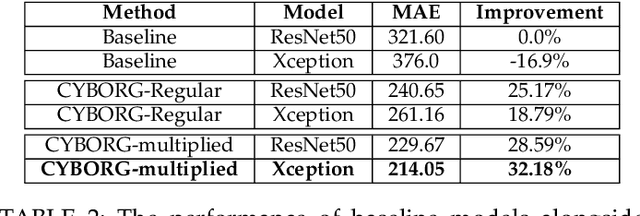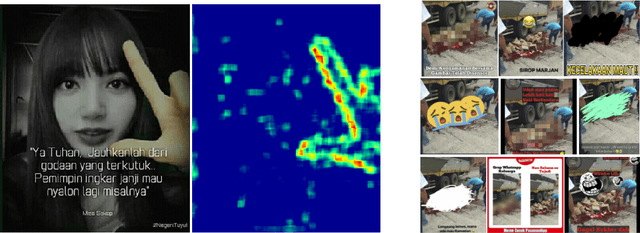Katherine R. Dearstyne
Leveraging Human Salience to Improve Calorie Estimation
Jun 15, 2023



Abstract:The following paper investigates the effectiveness of incorporating human salience into the task of calorie prediction from images of food. We observe a 32.2% relative improvement when incorporating saliency maps on the images of food highlighting the most calorie regions. We also attempt to further improve the accuracy by starting the best models using pre-trained weights on similar tasks of mass estimation and food classification. However, we observe no improvement. Surprisingly, we also find that our best model was not able to surpass the original performance published alongside the test dataset, Nutrition5k. We use ResNet50 and Xception as the base models for our experiment.
MEWS: Real-time Social Media Manipulation Detection and Analysis
May 13, 2022


Abstract:This article presents a beta-version of MEWS (Misinformation Early Warning System). It describes the various aspects of the ingestion, manipulation detection, and graphing algorithms employed to determine--in near real-time--the relationships between social media images as they emerge and spread on social media platforms. By combining these various technologies into a single processing pipeline, MEWS can identify manipulated media items as they arise and identify when these particular items begin trending on individual social media platforms or even across multiple platforms. The emergence of a novel manipulation followed by rapid diffusion of the manipulated content suggests a disinformation campaign.
 Add to Chrome
Add to Chrome Add to Firefox
Add to Firefox Add to Edge
Add to Edge